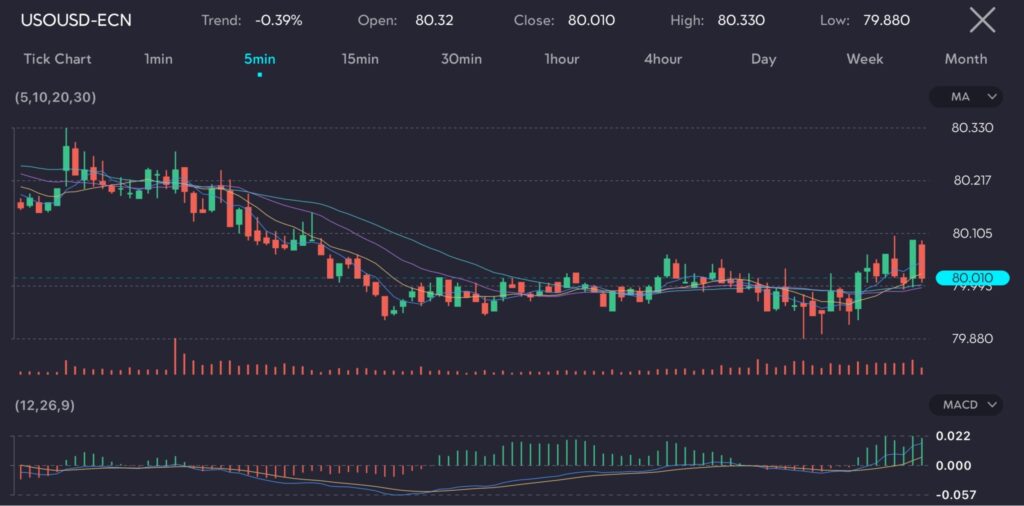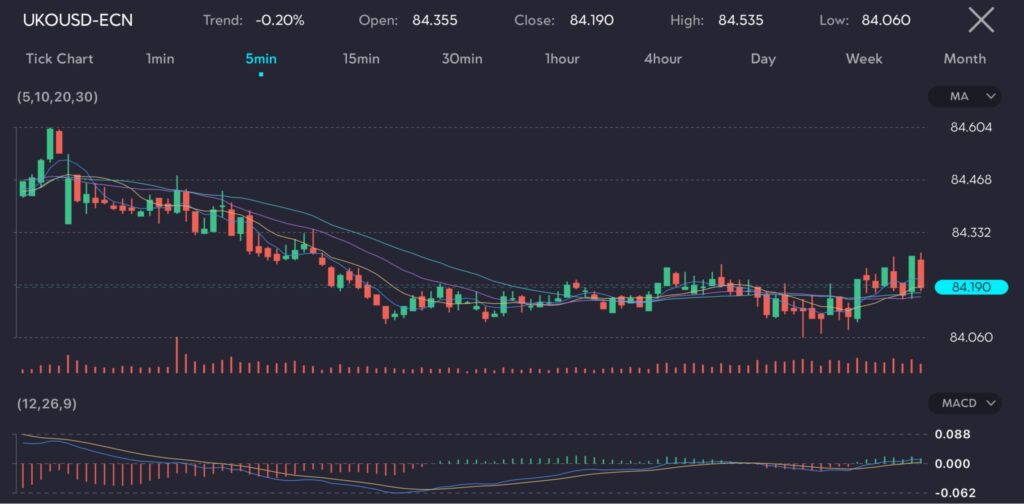Key points:
- Brent crude oil fell to $84.13 per barrel.
- West Texas Intermediate crude oil slipped to $80.19 a barrel.
- Market focus shifts to global demand growth and inventory levels.
Oil prices edged down in Asian trade on Tuesday, after rallying in the previous session. Brent crude oil (Symbol: UKOUSD) dropped to $84.13 per barrel, while West Texas Intermediate (WTI) crude oil (Symbol: USOUSD) decreased to $80.19 a barrel.


The images above show the bullish momentum in oil prices, as observed on the VT Markets app.
Shifting focus to supply and demand
The oil market has redirected its attention to underlying fundamentals, which have shown signs of softness. The global crude oil inventories and refined product storage have been rising in key locations such as the United States.
This increase in inventories suggests that supply is currently outstripping demand, leading to potential downward pressure on prices.
Further, the global oil demand growth has decelerated, with an increase of only 890,000 barrels per day year-on-year in the first quarter. Further deceleration is expected in the second quarter.
This slowdown in demand is partly reflected in the oil refinery output of China, which fell by 1.8% in May compared to the same month last year. The decline was attributed to planned maintenance and squeezed processing margins.
External influences driven by the US dollar
Markets are closely monitoring upcoming speeches from several US Federal Reserve representatives for further clues on interest rate movements and their impact on US oil demand.
The anticipation of higher interest rates typically strengthens the US dollar, making oil more expensive for holders of other currencies and potentially dampening demand.
Despite these bearish indicators, the near-term impact of supply cuts from the OPEC+ group remains a bullish factor. The OPEC+ guidance signals stagnation in oil supply growth for 2024 and a potential downside risk to production in 2025. This outlook suggests that while demand growth may be tepid, constrained supply could provide support to oil prices.
Risks and opportunities for oil traders
Oil prices are likely to remain volatile as the market balances between weak demand growth and constrained supply from OPEC+ cuts. Monitoring global inventory levels and upcoming economic data will be crucial.
Related article: How to trade oil CFDs
If OPEC+ maintains its supply discipline and demand recovers moderately, oil prices could stabilise or even rise. However, economic uncertainties and potential shifts in monetary policy will continue to influence market dynamics.









